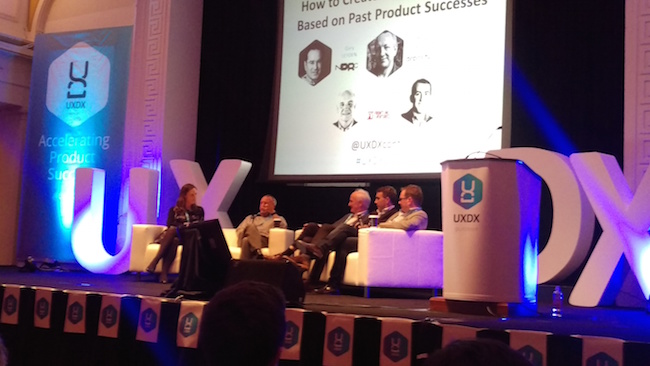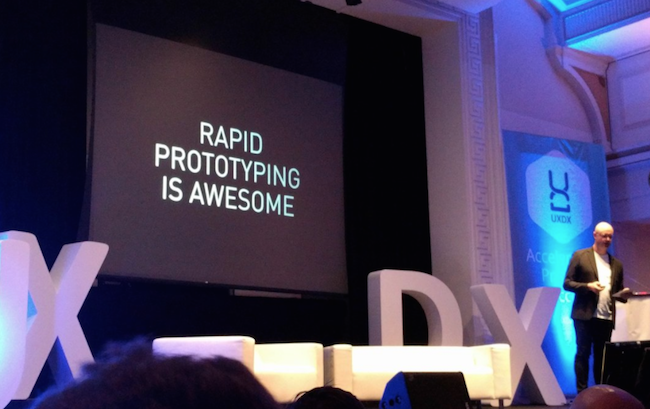We just finished attending the first UXDXConf in Dublin, which aims to merge design and development in both hardware and software in order to accelerate product success. With speakers from IBM, Intel, the BBC, frontend.com and many more, we chose our favourite tidbits from the various talks. Some of the key takeaways we enjoyed include:
Gary Leyden from the early stage accelerator NDRC Launchpad noted that when evaluating companies for each cohort of his accelerator, he specifically looks at the strength of the design component of the founding team. Given around 10 companies are selected from typically over 130 applicants, not having design in your team could easily cost you your first investment.

This approach continues on to later stage investments too. Angel investor and former Activision Demonware CEO Tony Kelly noted that he actively seeks out companies with a strong design component for his investments, leading him to invest in companies such as Fluid UI, Love and Robots and Deposify.
Larger investors, such as Frontline Ventures also have a strong focus on ensuring design is present in all their investees - they go as far as contracting external UX researchers who work directly with their client companies to ensure that the desired standard of design is achieved.
Basically if you are a startup or scaling company and you don’t have a strong design component, you are putting yourself at a significant disadvantage in terms of raising funding, regardless of whether you are looking for Seed, Angel or Series A/B level investment.
Cross functional teams, with all the skillsets and capabilities needed to take ideas from concept to delivery are becoming more prevalent in organisations of all sizes - but everywhere it is happening, there are teething pains.
People who once learned to ply their trade in deep hierarchies have to learn to make decisions and act autonomously. Managers and leaders need to unlearn many of their long held beliefs - to treat teams as “black boxes”, using metrics to check if deliverables are successful without needing to input large numbers of signoffs up and down the chain of command. Some job titles have changed and some roles have become obsolete entirely.
Typically it takes a few (often chaotic) months for the improved approach to take hold and the benefits to manifest, but it is a process that must be stuck to even if painful initially.
The heir apparent to decisions made by analysing big data is taking shape, and it looks like it is UX. By combining data with design thinking and “walking in your user’s shoes”, more empathy is being incorporated into design decisions, resulting in more user friendly products. Big data might suggest where to look, but dogfooding your own products and asking questions like “how do I feel about this?” need to be incorporated into products too, and on occasions overrule the direction provided by data.

Engineering must be the innovation core and be considered a major competitive advantage of an organisation now - there is no scope for treating it as a secondary priority. Even Ryanair have about-faced, investing hugely in their IT infrastructure and usability and are seeing significant growth based on it.
Quality expectations are higher now too - even for enterprise where usability was less of a priority than before. Design is now a requirements for the internal tools companies use too (not just the customer facing ones) - with the BBC having a clearly identified focus on the design of the products their own people use. The old sales models (salespeople selling to companies) is gone - people expect even enterprise software to be usable.
Design is finding it’s voice in industry and designers are becoming more involved in decision making in modern organisations. Meanwhile Agile is still evolving to incorporate the changes needed to incorporate this shift in focus. UXDX was founded to bridge the gaps that still exist between design and development and the needs of design driven organisations.
And UXDX 2017 is just around the corner.